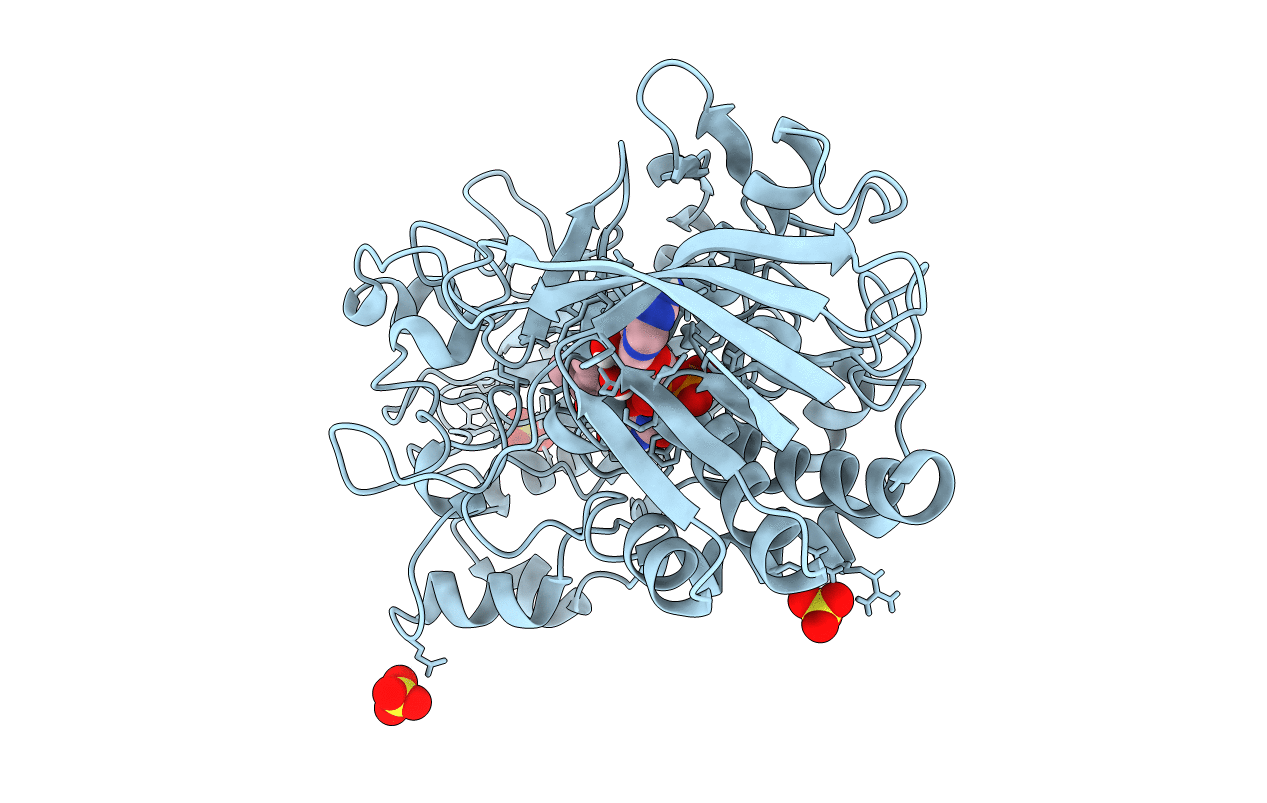
Deposition Date
2014-07-17
Release Date
2014-12-10
Last Version Date
2023-09-27
Entry Detail
PDB ID:
4U2L
Keywords:
Title:
Dithionite reduced cholesterol in complex with sulfite
Biological Source:
Source Organism:
Streptomyces sp. (Taxon ID: 74576)
Host Organism:
Method Details:
Experimental Method:
Resolution:
1.34 Å
R-Value Free:
0.13
R-Value Work:
0.09
R-Value Observed:
0.10
Space Group:
P 1 21 1


